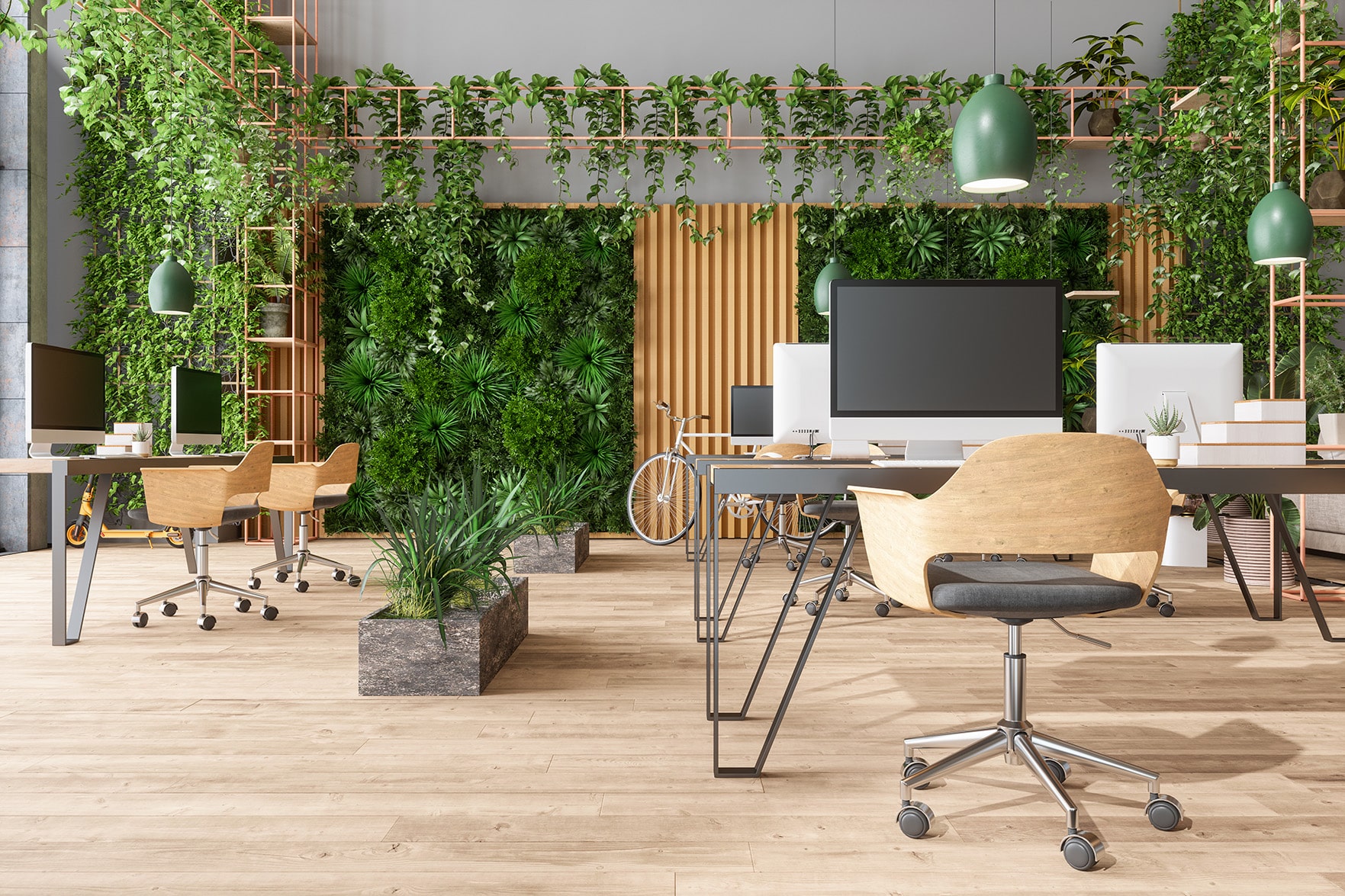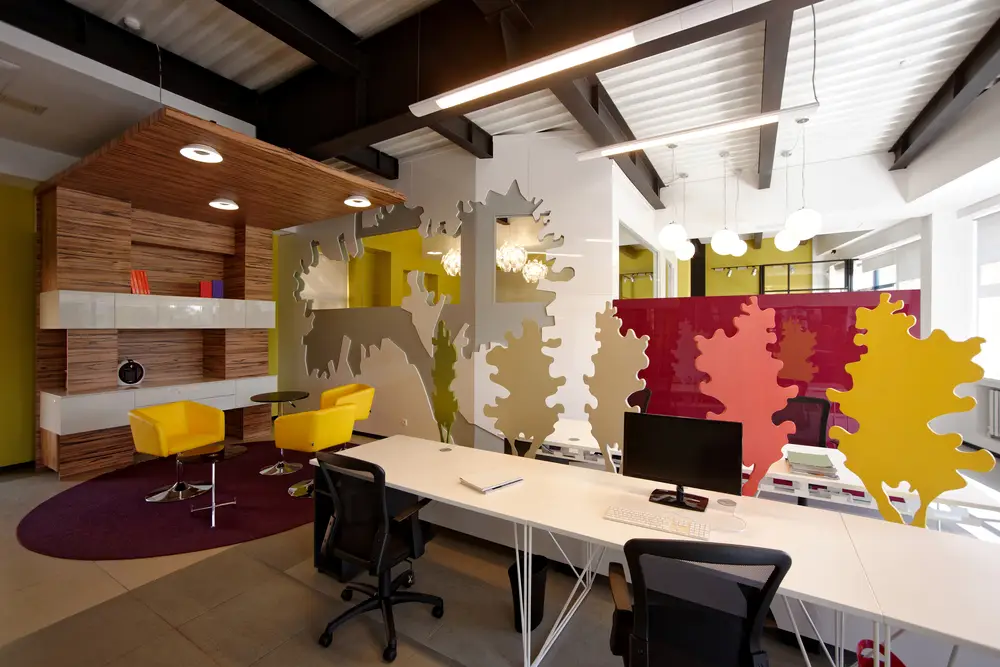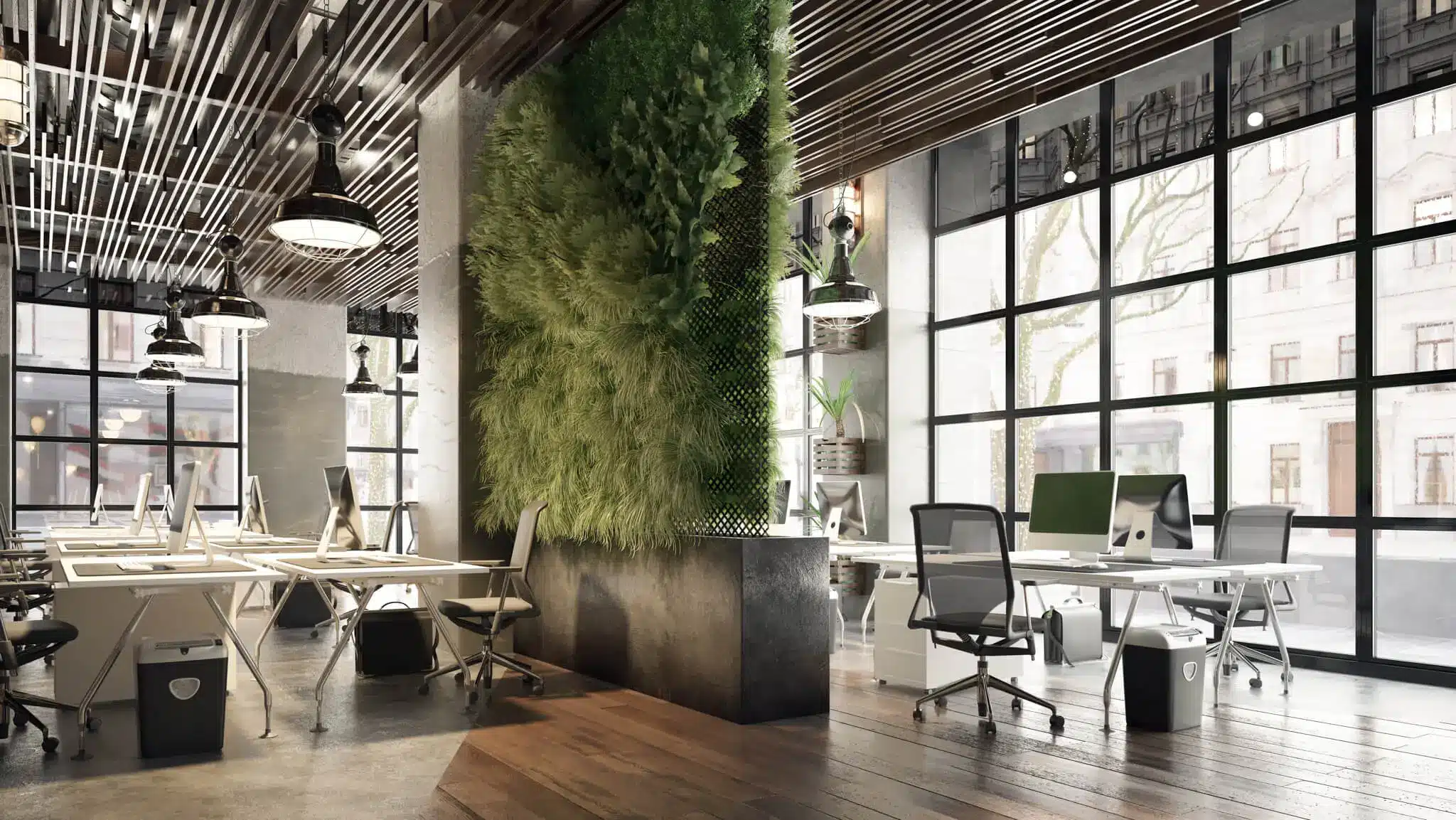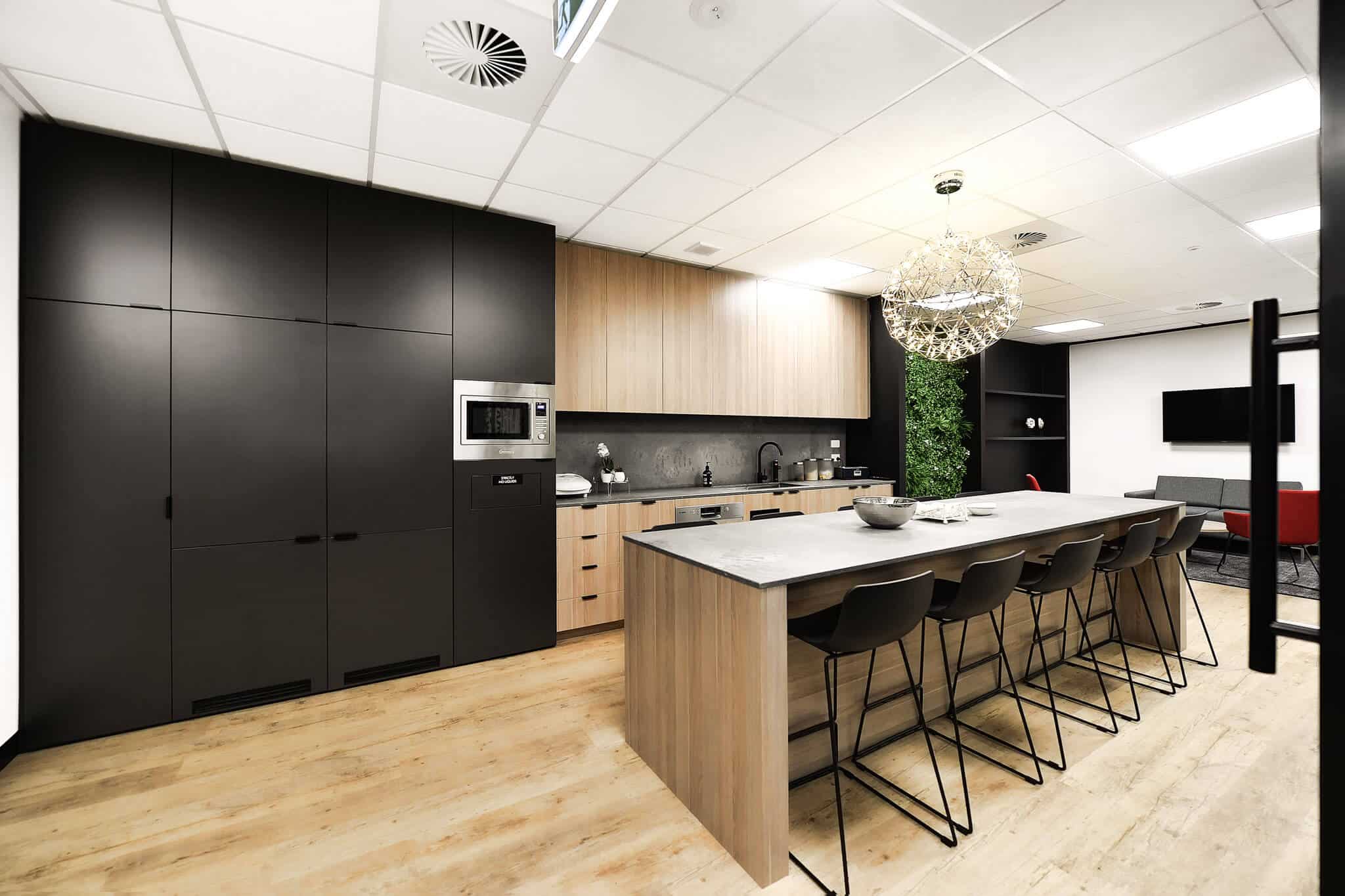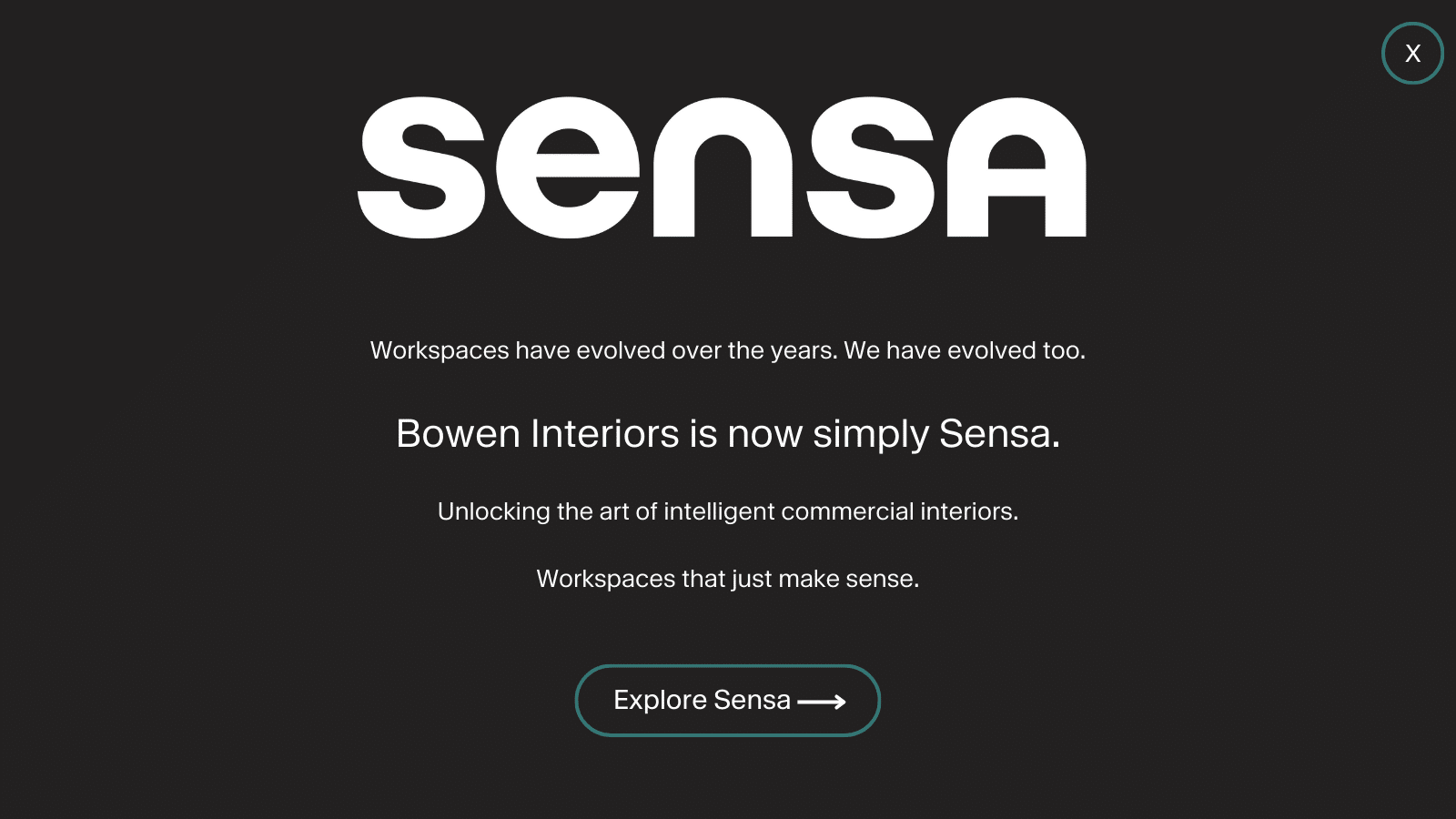There’s no denying that COVID-19 has changed the working landscape as we know it forever. From remote work and hybrid work to flexible office hours and more, the typical office environment no longer looks the same as it once did.
Throughout the past year, we’ve seen forward-thinking companies push the boundaries of office design to create more engaging and productive work environments, which we expect to continue well into the future.
But what will the workplace of 2023 look like? This article explores some of the top trends in office design that are expected to gain popularity. Some of these office design trends of tomorrow are even already taking shape. Let’s inspire you and inform your plans for the upcoming year!
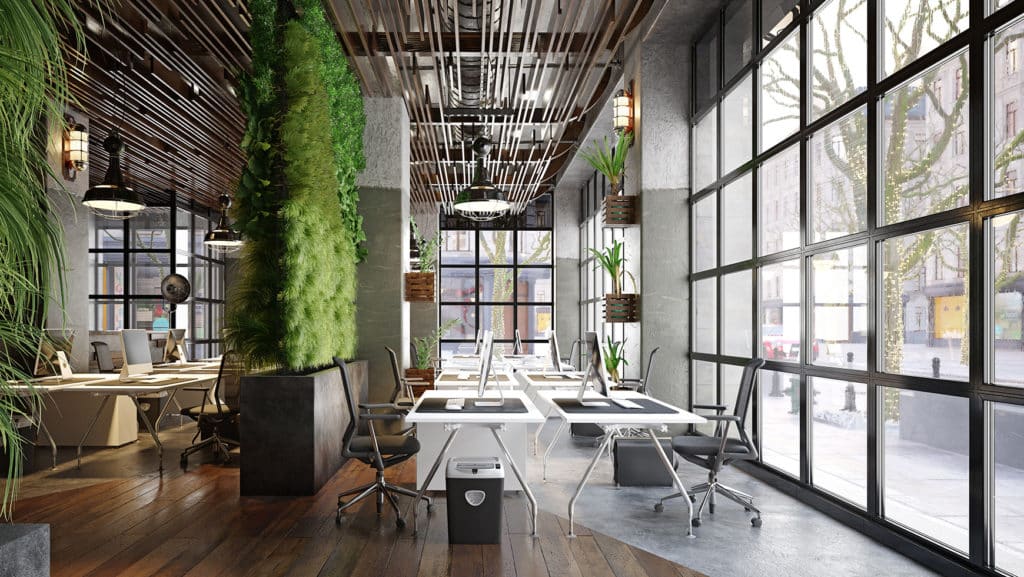
Office designs are changing
Post-pandemic, companies are shifting their focus away from traditional office spaces and towards more contemporary and innovative designs. For example, some companies are exploring the use of open floor plans, which promote collaboration and communication among employees.
Other popular trends include flexible workspaces that allow employees to move around freely within the office space, as well as other gathering spaces where employees can work together in a more casual setting.
Along with these trends, we’re also seeing an increased emphasis on employee wellbeing, flexibility, sustainability, productivity, and digital technology. That’s because the pandemic has highlighted the importance of agile work environments that are conducive to both social interaction and focus.
At large, the consensus is that the future of office design is all about creating spaces that inspire and boost productivity while being environmentally friendly and flexible enough to embrace new technology. Most importantly, they’re about making employees feel “at home” in an office setting.
Why is it important to be aware of the newest office design trends?
78% of employees say that the physical workplace directly impacts where they choose to work, indicating just how important it is to be aware of the latest design trends. By staying up-to-date, you can create a work environment that employees love and drive increased productivity and engagement.
Speaking of productivity, in one study, 97% of respondents said that their current workspace drained their focus, while 46% said the existing office designs impacted their productivity “heavily”. That means that office design isn’t just about aesthetics or creating a modern office design but also about business performance and productivity.
Being unaware of the latest office design trends and continuing to use outdated, traditional office designs can put your company at a significant disadvantage compared to your competition and hinder your efforts to attract and retain top talent. The result won’t just be dissatisfied employees but also negatively impact the bottom line.
Accordingly, it’s worth it to keep an eye on the future of office design and make sure that your company is on the cutting edge.
14 Top Office Design Trends 2023
With that said, let’s discuss how modern offices will look and function in 2023. Take note of the following trends, and make sure your office is equipped to embrace them:
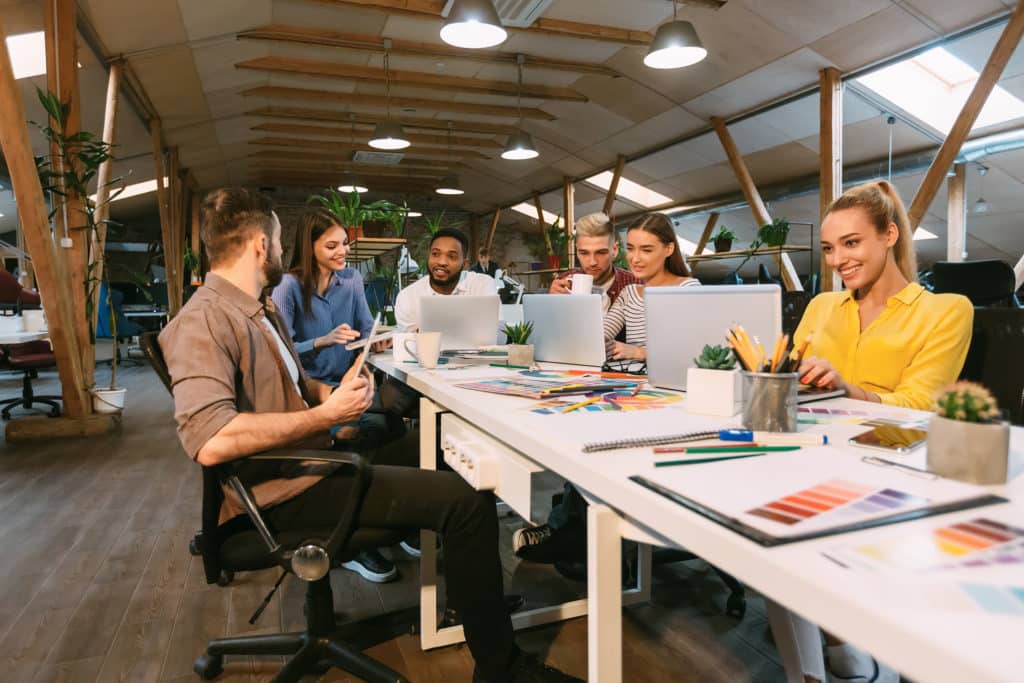
1) Telling a brand story with design
Every business or brand has a story, and top businesses are starting to use their office space to tell that story in a way that resonates with employees and clients alike. What’s yours? Think about an overarching theme that reflects your values, mission, and goals, and then think about the visual aesthetic that could best bring that theme to life.
For example, if you run an environmentally-conscious company, you might opt for a design incorporating recycled materials or other sustainable elements. Or, if you’re a tech startup, you might opt for a sleek and modern design that embraces the latest in digital technology.
Your brand story can also be told with simple elements such as wall coverings, artwork, furniture styles, colour choices, lighting, and more. By creating a cohesive theme throughout the office that reflects your brand’s identity, you not only appeal to employees but also send a powerful visual message to customers.
WE BELIEVE WORKING AUSTRALIANS DESERVE A WOW WORKPLACE
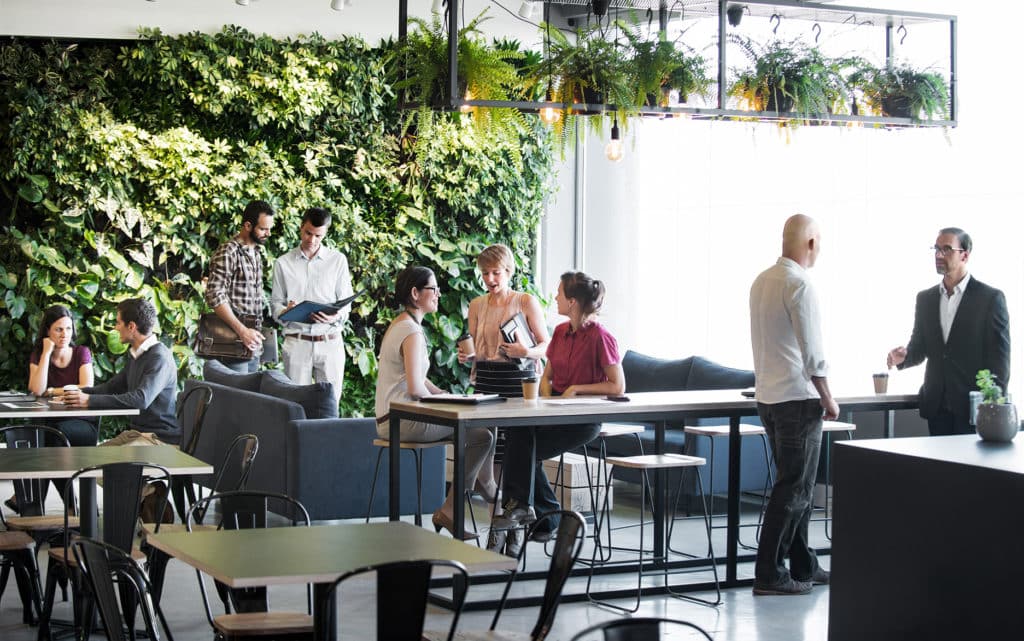
2) Flexible, dynamic and multipurpose layouts
Cubicles and private offices are becoming a thing of the past as modern office spaces embrace a more dynamic and flexible layout that focuses on collaboration and creativity. Desks and chairs can be easily moved around, while meeting rooms are designed with versatility as a key feature.
Many offices are also experimenting with open office environments, following a pod-like layout with large tables and multi-use spaces while still allowing for more closed meeting rooms using small private areas. The goal is to create an environment that allows people to flow freely, share ideas, and work closely with others while maintaining a sense of privacy when needed through separate spaces.
This type of open-concept office design is ideal for boosting communication and creativity while also making it easier to move around the office, hold impromptu meetings, or tackle last-minute projects. To make this possible, office furniture and storage need to be designed for comfort and with added mobility in mind.
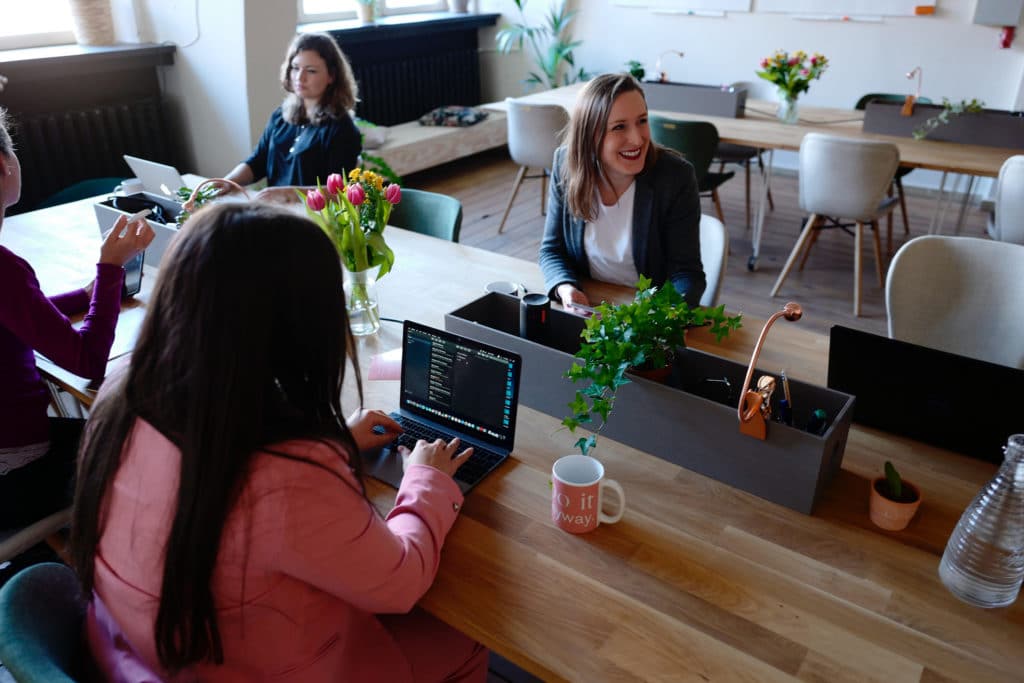
3) Active workplace design
Along with flexible, collaborative spaces that are more conducive to creative brainstorming and getting work done, active workspace design is also becoming increasingly popular. This means incorporating elements into the office environment like standing desks, treadmill workstations, and even exercise balls for when your employees need a break from sitting all day.
Studies have shown that workday exercise leads to a 72% boost in time management and workload completed on days when employees work out and that those who exercise during the workday have lower stress levels and increased energy.
By incorporating active elements into the office design, you can enable employees to stay healthy and focused throughout the day.
4) Neurodiverse spaces
Neuroscience is also playing a larger role in office design as companies become more aware of the benefits of having neurodiverse spaces. This refers to offices designed with the needs of people with different types of neurological conditions in mind, such as ADHD, autism, dyslexia, and more.
Things like lighting, colour choices, soundproofing, noise levels, and furniture can all play a role in how inclusive an office is for those with neurological conditions. Many companies are now making it a priority to ensure their offices are accessible for everyone working there.
On top of that, neurodiverse spaces are also more comfortable and inviting for neurotypical employees as well, allowing them to focus better on their work without distractions.
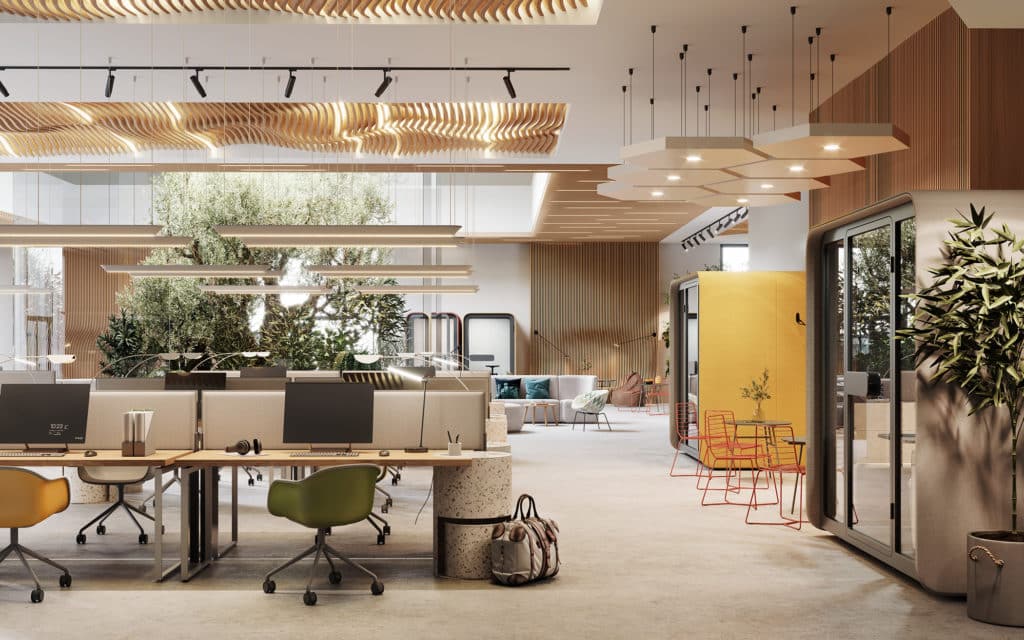
OFFICE LEASE DUE TO EXPIRE?
5) A focus on sustainability
For long, the definition of a “green” office has been limited to energy-efficiency and using recycled materials, but that’s quickly changing. As companies become more aware of their offices’ impact on the environment, we’re seeing a shift in what it means to be sustainable in an office setting.
Design-wise, that means creating an office environment that isn’t only comfortable for employees and inviting for customers but also supports environmental initiatives like reducing carbon emissions, improving air quality indoors, using green building techniques, and implementing recycling programs.
Examples of this modern-style shift in office design trends include incorporating more natural light into the space, using modular furniture made from recycled materials, and installing energy-efficient appliances such as motion-sensor LED lighting, water-efficient faucets, solar panels, and more. Of course, that’s along with using sustainable materials in the design.

6) Using technology to create smart offices
The rise of technological advancements is also shaping office design trends. Smart offices are those designed with the latest technology, incorporating features like digital signage, touch-screen displays, sensor-based lighting, climate control systems, workspace booking, room capacity, space utilisation, and more.
These smart technologies make it easier for employees to collaborate and stay productive throughout the day and help organisations gather data on how their offices are being used.
This information can then be used to make decisions on everything from facility improvements to space planning and help companies stay competitive in today’s digital age.
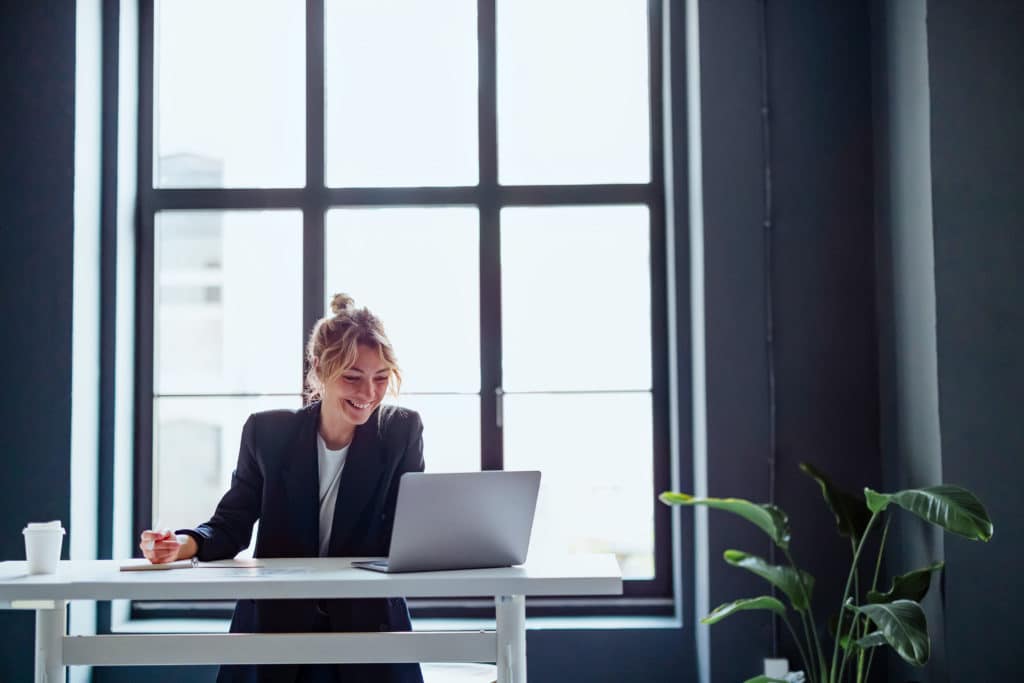
7) Ergonomic and active furniture
In addition to incorporating active design elements into your office, it’s also essential to focus on furniture. Ergonomic and active furniture can help employees stay focused, comfortable, and healthy while they work, leading to increased productivity and reduced absenteeism.
Ergonomic furniture supports the body and promotes good posture, while active furniture encourages employees to move around and get their blood flowing.
Some examples of ergonomic and active furniture include standing desks, sit-to-stand workstations, exercise balls for chairs, yoga mats, comfortable chairs, and even pedal desks that allow you to get up and move while you work.
Generally, furniture is a key factor in how comfortable employees feel in their workspace. The more inviting and supportive your furniture is, the more productive your employees will be.
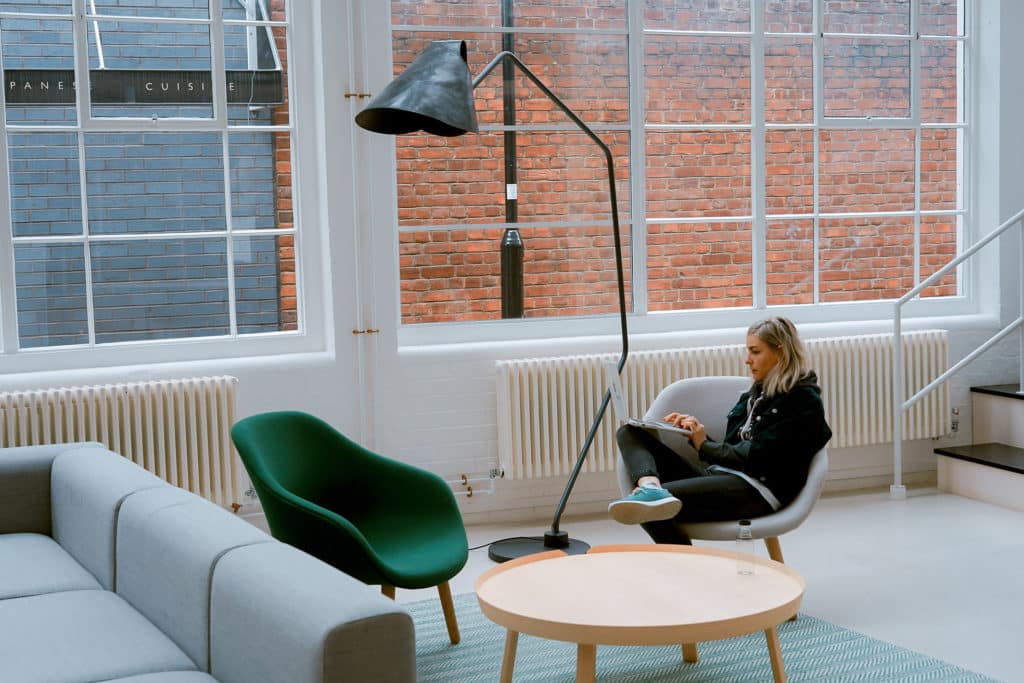
8) Creating a home-like atmosphere
Since the pandemic got most people used to working from their own home, the trend of creating a work environment that feels like home will continue to grow. The aim is to make employees, feel as comfortable and relaxed working in the office as they do at home.
In an office environment with a home-like atmosphere, employees will feel welcomed and want to spend more time in the workplace. The design elements would focus on residential-like qualities, such as soft lighting features in common spaces, comfortable furniture, unique artwork around the office, cozy seating corners, and timber flooring.
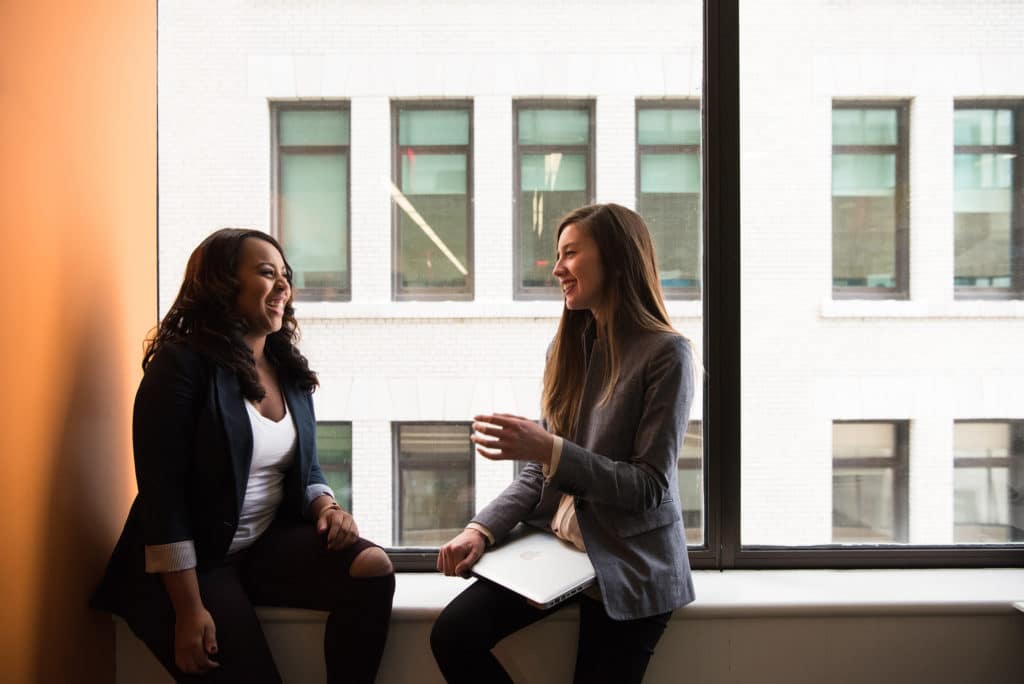
9) A focus on wellness
Wellness is becoming a major area of focus in office design, as many companies are starting to see the value of promoting healthy habits and a stress-free work environment. The ROI for investing in wellness initiatives can be as high as $1.5 for every dollar spent.
Wellness-focused workplaces may offer perks such as onsite exercise classes, mindfulness rooms, healthy food options, access to health coaching services, and more.
Other actions may include offering flexible work schedules, providing stress-reducing activities such as meditation and yoga, and encouraging employees to prioritise their health by taking regular breaks throughout the day.
9 COMMON MISTAKES TO AVOID ON YOUR FIRST OFFICE FITOUT
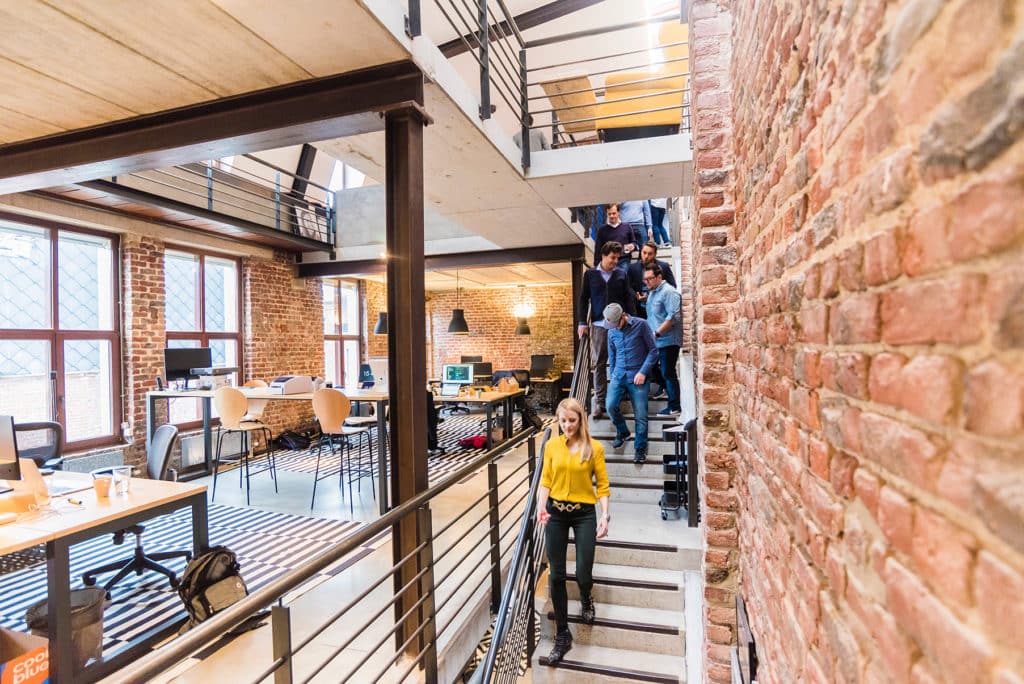
10) More natural lighting
78% of employees say that natural light improves their wellbeing, and 70% say it improves their work performance. As a result, more companies are restructuring their office layouts to take advantage of the positive effects of natural light.
Whether by moving desks closer to windows or adding more skylights, design professionals are making it a priority to make as much use of natural light as possible.
If it isn’t possible, other options include incorporating artificial lighting that mimics natural lighting, using colours and textures that diffuse light, and planting ground-level trees and shrubs outside windows to act as natural filters.
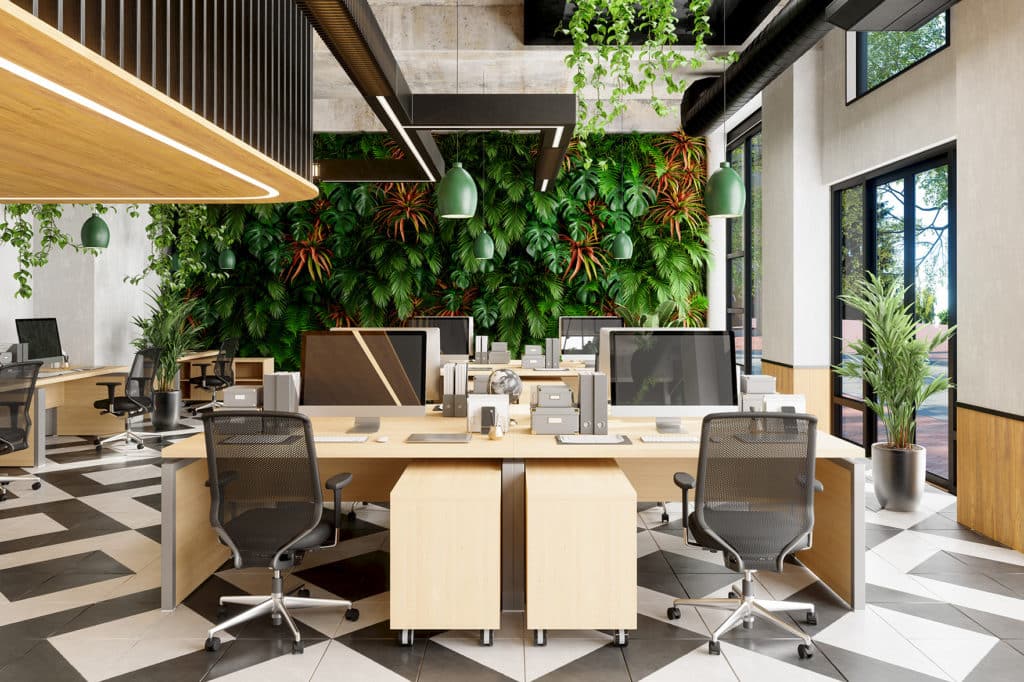
11) Connecting with nature through biophilic designs
As people spend more time indoors, there’s a growing need for more connection with nature. This has led to the rise of biophilic design, which strives to bring natural elements into our indoor spaces.
Some popular ways of incorporating natural elements in the office include using live plants and trees, indoor plants, living walls, green walls, and green roofs. Other ideas include:
- Using natural materials like wood or stone.
- Featuring artwork that reflects the beauty of nature (such as landscapes or animals).
- Placing water features throughout the space.
Overall, biophilic design can help create a calming and comfortable office-feel that fosters productivity and employee well-being by mimicking the natural world.
12) Increasing importance of acoustics
Noise levels can be a significant distraction and negatively impact productivity, meaning that companies need to find noise reduction methods or add sound-masking technology as required.
Some popular solutions include using acoustic panels and sound-absorbing ceiling tiles to reduce echoes, adding acoustic-friendly materials like carpeting or cork flooring, or installing products designed specifically with acoustics in mind (such as wall coverings, furnishings, and lighting).
While this can seemingly be a small detail, focusing on acoustics can significantly impact both employee wellbeing and the company’s bottom line.

13) Mixing old with new, modern with traditional
As companies look to incorporate more modern elements into their offices, there’s also a growing trend towards mixing old and new design elements.
This can involve pairing retro and geometric patterns, such as herringbone or chevron flooring, incorporating vintage furniture pieces into a modern space, or even adding more earthy colours to a sleekly designed office.
Plus, flooring isn’t out of the question here, either. By mixing engineered hardwood with LVT, designers can create an interesting visual contrast while neutralising the colours in a space or complementing surrounding design elements.
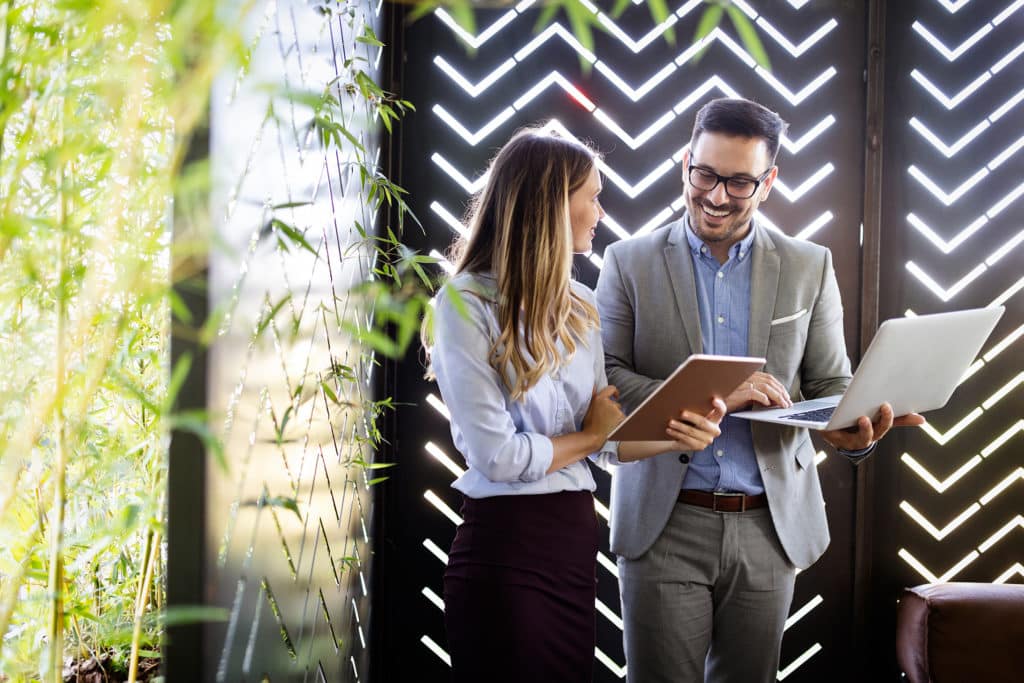
14) Unique textures and finishes
Finally, the last trend that’s likely to emerge in office design is the prioritisation of unique textures and fixtures. Unique often means bold and unexpected, which is often achieved through using different textures and materials in furnishings or fixtures.
Dull, bland interior design isn’t going to cut it anymore. Companies need open spaces that are creative, eye-catching, and reflect the overall brand image in a positive way, and the uniqueness of textures, fixtures, and flooring can help achieve this.
How to Design Office Spaces That Inspire Creativity
Today’s office spaces are evolving to become more than just places where we work. They’re becoming hubs for creativity, productivity, and wellbeing – and as such, they must be designed with these goals in mind.
For that purpose, office space planning is essential, taking into account factors such as design concept, floor plan, space availability, budget, and more. Attempting to design a workspace without considering these important factors is likely to result in an office that’s less than inspiring.
